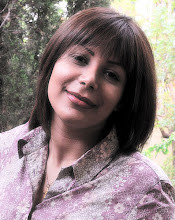



Had these works been made with any greater hand-work skill, craftsmanship, or ceramic technical knowledge, they would simply have been unspeakable. They would have resembled the worst kind of meretricious ceramic ‘kitsch’ associated with the craft shoppe, and from which the oh so tasteful craft connoisseur recoils, nay cringes, with embarrassment, appalled at the unholy image of craft that mocks him from the mirror frame. Psiché Hughes’ work confronts us – (the ceramics audience at any rate), with questions concerning the social construction of taste accompanied by a question of what constitutes skill – dare I say it – a question of epistemology. What counts as skill in ceramics is far from a given, although you could certainly be forgiven for thinking otherwise given the extent to which the word is used wholly uncritically and without interrogation in most of the writing, talking and teaching related to Ceramics.
Family Tree We acquire skill with which to manipulate clay, this slippery, muddy stuff, at once pliable and compliant in some ways but, as Grayson Perry once observed, remarkably intolerant of amateurs. So the work gets shiny and accomplished, a little too accomplished perhaps, its absurdity becoming just too evident, embarrassing, so we rush to theorise and call on irony, for how else can we escape the worst excesses of our own bourgeois associations? It’s a bit like having embarrassing relatives – we think our own practices to be sound and appropriately knowing/ tasteful (or ironic – delete as applicable), / (in)authentic/ (post) modern – you can take your pick, but what about those others? Those others that aren’t us? Those makers of wobbly brown pots, or wobbly white pots or makers of uber-designed not/pots or makers of (my own particular pet hate and designated ‘other,’) the makers of ‘the female form’ - bleeeeeeeaaaaaaaaaaaagh!!!
East End Boys and West End GirlsThen, every so often, along comes an artist like Psiché Hughes and blows the whole ghastly edifice apart – almost certainly without meaning to which is, of course, the only way it can be done IF – and this is important - you’re going to do this way, that is without irony. And it gets worse. She’s done it in public in, wait for it, a Cork street gallery - actually it’s not, it’s Maddox St, but same difference – and since this bit is all about context, let’s take a couple of lines to examine that. Now I didn’t know these places still existed. I sort of did, but I freely admit I took absolutely no notice of them. I have no idea if anyone else does, but I was under the impression that the East End ruled, that the whole Cork St. thing had been blown clean out of the water 15 years ago by the Three Graces and that the West End was finished. I thought that Cork St was old money, Fine Art of the fiiiiinest variety and, bluntly, redundant. Old. And for all I know that may be right. Waddingtons is still there though. And it’s all looking pretty much the same as it did 25 years ago. What I don’t know is whether that is its strength or its weakness. Now that the East End is unquestionably the Establishment – (see Saatchi Gallery – gone West End) – will we turn round and regard the West End with some lingering respect? I honestly don’t know.
New Becomes Old Becomes NewI do know it will have to reinvent or at least refresh itself – it needs to be demonstrably alive but the interesting thing, potentially, is that these were the dealers of ‘fine art’, in other words craft, as in Camberwell School of Art and Craft. They were the dealers of paining, printmaking and drawing on paper. Old fashioned crafts by anyone’s estimation. So will they invigorate themselves by dealing in art that contains contemporary craft practices? Countless thousands of artist paint, draw, reproduce things on paper, and in clay and use lens-based media to make highly crafted films and photographs. So, let us hope that these dealers engage themselves with these practices. If they do, then we are in for an exciting time –but they should be warned that this space is not just vacant – Jay Jopling’s White Cube is doing exactly that and has been doing for some months now.
Study CollectionSo let’s get back to the artist and translator who generated all this: Psiché Hughes. A small collection of her work, distributed among the pigeon holes of a white display case resembles the results of the curious empirical enquiry of a botanist or natural historian of another age materialised in clay. It even more closely resembles a study of ceramic types, like a series of approximations which seek to imitate or even ‘perform’ ceramics – like someone who attempts to perform gender, doesn’t do it very well so tries it in numerous different ways until finally ‘coming out’ as transgendered – and proud.
Performing Ceramics At first glance, the collection of objects presented in their white pigeon holes, look like someone’s collection of pottery but instead of buying the original object, they decided to make copies. Thus we have: the Lucie Rie, the Gabby Koch, the imitation souvenir from Morocco, the shell and the faux fruit and veg – the sort you get from a semi-posh kitchen ware shop to put in the fruit bowl in the absence of real fruit. The ‘Moroccan Souvenir’ should be symmetrical with flat lid, but it’s wonky, it flops a bit to one side. It would be cleanly, faultlessly re/produced by a Properly Trained Designer, but it would also be ‘knowing’ and ‘ironic’ in some way, a ‘comment’ on the souvenir industry. Hughes, however, does not concern herself with such predictable nonsense. Why should she? As a translator of Spanish American literature she has more understanding of satire in her little finger than the average clunky designer can amass in a lifetime of attempted ironic comment - comment which is rarely, if ever, backed up with any understanding at all of what satire actually is, what it’s for, or how it works. No, this is a carefully but imprecisely made study. It’s not a ‘quotation,’ it is a performance. The wonky lines on the Rie pot and its all-round wonkyiness, the pretend ‘designer’ fruit all deliver the same message. They’re a careful, loving study, tender and wholly unselfconscious.
Translation I wonder, for a while, if this is a ‘knowing’ execution, even though there is clearly no attempt at irony. Then I see the oranges in the fruit bowl and the penny drops. They are not oranges in fruit bowl exactly, they are a ceramic rendering of a painting of oranges in a fruit bowl. They are arranged to the point of seeming to be almost flat. They are certainly not trompe l’oeil but they are oddly convincing because they can be comfortably believed as a version of a painting of an arranged still-life which itself signifies an ordered version of real-life. The orange and lemon skins are not rendered in glaze – why bother - all that kerfuffle and for what - just to prove that the maker can make orange peel glaze? Not only is the image clearly articulated by acrylic paint, it also clarifies the intention. These are not meant to be ‘proper’ ceramics. She is – well – translating – as she has always done.
Painting Hughes makes clay objects with the eye of a painter. What painters constitute as important, valuable, and as skill is categorically different from the way potters assess these things. Painters see, collect and show and make ceramics completely differently from potters and, in the UK at least, the differences between these ways of seeing and comprehending is enhanced by the difference in the original training. The vast majority of artists working in clay in the UK have trained as potters and what they constitute as skill, as proper making, is largely concerned with material finesse. The joins must join, the glaze mustn’t have bubbles – you can’t concern yourself with how the bubbles look, if they look right – it’s just not – well – pottery – by definition they DON’T look right. You can’t let things break and then glue them back together again, unless its done in a proper way – raku or something. That’s permitted breakage. Potters have rules of engagement – a sort of haram and halal approach to things. And painters do too, and this is what potters don’t get. Take colour, for example. Tone, saturation, local colour, distribution of weight, the visual equivalent of sentence stress – it all matters, but not to potters who tend to just jumble it all up in a firework display of dreadful virtuous glaze technique. Oooooooooooh – look how clever she is! Look at those crystals! Will you just LOOK at those finely controlled drips! That RED! And so on.
Painter: ooooooOOooo. That’s intesting, Fine tonal variation, there, sort of cloudy looking.
Potter: It’s CRAWLED. Snort. That’s against the rules. We don’t concern ourselves with the way things LOOK. Only if they’re properly done or not.
But then again you see, that’s not quite true either. The problem is that the seeing of the potter, the potter’s gaze if you like, is so obsessively trained that all they see IS the crawl, not the colour variation.
Avoiding ConclusionSo, who’s right? Darned if I know. I’ve become too much of a hybrid myself over the years. Well not quite, not yet. I’ll always despise virtuosity even if I can be persuaded it’s there for a reason. I do know that I greatly enjoyed Hughes adventure through planet ceramics and her lovingly made ceramic fruit and veg and, perhaps most of all, I loved the imitation paintings, with very lovingly ‘painted’ banana skins and fennelly looking fennel. It’s not just the passion and love and tenderness and curiosity, all of which can be admired, it is that she is developing her own material visual vocabulary which works. It resembles the rendering of a language that you know but the speaker is laying the emphases – the sentence stresses - in unfamiliar places. For this reason, you find it difficult to understand. Slowly you realise you do know all these words and that the construction of them is also correct, but you just didn’t recognise it as first because of the unfamiliar rhythm.
A Note On Think TankI’ll just add here that Think Tank has produced a collection of papers on the subject of Skill. It’s not bad at all, in fact it’s a good start, but it is only a start. It comes across as a collection writing from people – albeit intelligent, thinking people, who have only just woken up to the fact that skill isn’t either uncontested or uncontestable. This may be because the only maker among them is unfortunately absent from this collection of papers, or it maybe they really haven’t been thinking about it for long. I’ve read almost all of it, and when I’ve finished, I might attempt to review it…





















































